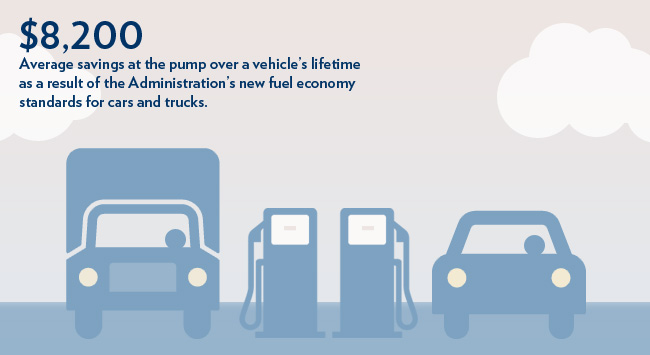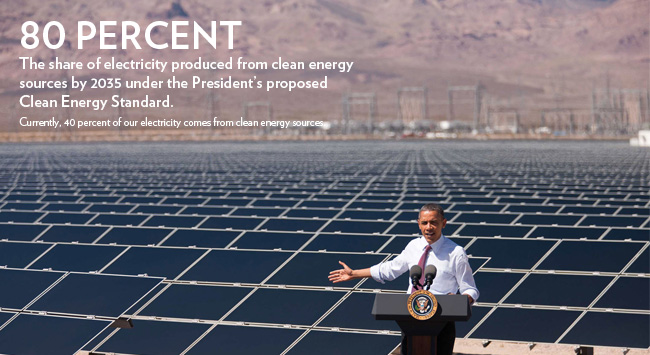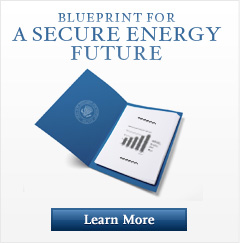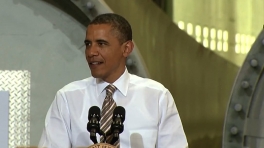Energy and Environment Latest News
Federal Buildings Leading By Example
Posted by on September 10, 2012 at 11:46 AM ESTI’m thinking of a Federal building. It is the third oldest federal building in our Nation’s capital. It houses the Federal department in charge of promoting economic growth. And, thanks to a green retrofit, it saves American taxpayers $3.5 million every year.
It is the Treasury Building. This LEED Gold project – the oldest building in the world to earn this designation – is a shining example of how green building is conserving energy, protecting the environment, and saving taxpayers money. There are now more than 800 LEED certified Federal Government projects, representing almost 100 million square feet of space.
Over the last 18 years, our organization, the U.S. Green Building Council, has worked closely with stakeholders from the public and private sectors to help them deliver the economic and environmental benefits of green building. We have seen wonderful examples of pioneering government activity as well as the pursuit of new opportunities to scale and accelerate innovation for the benefit of the broader building industry.
The Federal Government (including the military services) oversees approximately half a million buildings, and spends $7 billion a year in energy costs for those buildings. Clearly, improving energy and resource efficiency represents an enormous opportunity to save taxpayers money and promote the uptake of cost-effective clean energy technologies and practices.
We have seen tremendous progress to date. Governments at all levels have chosen to lead by example when it comes to the construction, design and operation of their buildings.
Learn more about Energy and EnvironmentWeekly Wrap Up: Salute the Troops
Posted by on August 31, 2012 at 3:00 PM ESTWatch the West Wing Week here.
Here's a quick glimpse at what happened this week on WhiteHouse.gov:
Remembering Neil Armstrong: Neil Armstrong, the first man to walk on the moon, passed away last weekend. In a statement issued on Saturday, President Obama said that “Neil was among the greatest of American heroes – not just of his time, but of all time.”
Check out the photo gallery remembering Neil Armstrong and watch the video of Neil Armstrong’s visit to the White House in 2009. To learn more about Neil Armstrong, visit NASA.gov.
Young Americans Building a Sustainable Future
Posted by on August 31, 2012 at 2:52 PM ESTToday, I had the pleasure of meeting with the extraordinary winners of the Youth Sustainability Challenge. We launched this challenge this spring to encourage young people from across the United States to tell the world what they’re doing in their communities to foster sustainability – and these winners rose to the occasion.
Our winners represent the innovation and talent of young Americans making a difference in communities across the Nation every day. From college student organizations that create “Solar Streets” in their communities, to youth-directed community micro-grant programs that provide assistance to young people for conservation projects, the winners of the Challenge have all applied their skill, creativity, and energy to make their communities stronger and healthier.
You can learn more about the innovative projects of our five winners by watching their short videos, which we featured at the“Rio+20” U.N. Conference on Sustainable Development in Rio de Janeiro in June. At the conference, we also sponsored a Forum on Youth Action to highlight the commitment and creativity of these young people and the millions like them across the United States and the globe.
To complement these events, today, the Challenge winners came to Washington, D.C. to meet with senior environmental policy-makers from the Administration, like EPA’s Deputy Administrator Bob Perciasepe. They discussed how young people can lead their campuses, schools, and hometowns in environmental initiatives. They also met with youth engagement leaders from the White House and EPA, and learned more about programs like EPA’s EcoAmbassadors.
These remarkable young people have reminded me of the importance of harnessing the creativity and passion of America’s youth in facing the critical issues of our day. Young people today have remarkable new tools and connective technologies at their fingertips to understand the world and others’ experiences, to generate and share solutions to sustainability challenges, and to inspire action. Here in Washington, we will continue to factor their insight and enthusiasm into our work. As they return to their schools and communities, it is our hope that the dialogue we had here during their visit will serve as a foundation for fresh initiatives and innovative solutions to our shared global challenges.
Gary Guzy is Deputy Director and General Counsel for the White House Council on Environmental Quality
Learn more about Energy and EnvironmentWhat the New Fuel Economy Standards Mean for You
Posted by on August 30, 2012 at 10:52 AM ESTWhen President Obama came into office, fuel efficiency standards for cars had not budged for two decades, and American consumers were losing out as a result. Thanks to the newest fuel efficiency and greenhouse gas standards finalized this week, the Administration has now guaranteed steady improvements for our cars and light trucks from model year 2011 through 2025.
The Administration’s standards represent the single biggest step the U.S. has ever taken to reduce dependence on foreign oil and cut harmful carbon pollution, and they will save consumers more than $1.7 trillion at the gas pump. They were supported by a diverse crowd of stakeholders – including 13 major auto companies that together represent more than 90 percent of U.S. sales, as well as the United Auto Workers, consumer groups, and environmental organizations.

This action is clearly historic, but what will it mean for individual car buyers? Because numbers like $1.7 trillion can be hard to grasp, here are answers to a few commonly asked questions about what the new fuel efficiency standards mean for Americans.
1. What will the effect of the 54.5 mpg target be on drivers?
An easy way to think about the effect of these standards is that average fuel efficiency of a car or light truck purchased in 2025 will be roughly double what these vehicles were required to achieve before 2011, when the Administration’s first round of new standards took effect. So if you currently fill up at a gas station every week, you’ll only need to stop every two weeks.
2. Will more efficient vehicles still be affordable?
Yes.The incremental costs of technologies that improve vehicle efficiency are recouped several times over by savings at the gas pump. In fact, consumers purchasing a vehicle with a standard 5-year loan can expect to benefit from day one as fuel savings offset higher payments in the very first month of ownership.
Another way to think about it: net savings (after accounting for any vehicle cost increase) for the owner of an average 2025 vehicle will be equivalent to a drop in fuel prices of $1 per gallon.
3. Will I still have the option to choose a large car with these standards?
Absolutely. The standards are designed to preserve consumer choice and allow you to choose the vehicle size that best meets your needs. Although we often talk about a 54.5 mpg-equivalent average for the industry, individual fuel economy and emissions requirements actually vary based on the size of a vehicle. A manufacturer’s fleet comprised of smaller cars must meet a higher mpg target than a fleet made up of larger vehicles, reflecting the different fuel economy capabilities of smaller and larger vehicles.
The standards also do not require specific technologies, but instead allow automakers to meet their fuel efficiency and greenhouse gas targets however they choose. In fact, manufacturers are expecting to deliver the required savings with a wide range of vehicle technologies. While these include advanced vehicles – like natural gas, hybrid, plug-in hybrid, electric, and fuel cell vehicles – they also include very substantial improvements in gasoline and diesel vehicles, from advanced transmissions to highly efficient engines to improved aerodynamics. As a result, consumers will have many options to save on fuel.
4. Do I have to wait until 2025 to save?
There’s good news on that front too. The standards deliver steady year-after-year improvements (see chart above), and purchasers of new vehicles today are already saving at the pump as a result of the Obama Administration’s first round of car and truck standards. As we’re seeing in showrooms today, automakers are stepping up and selling some of the most fuel efficient and cleanest vehicles ever available.
Drew McConville is Senior Advisor to the Chair of the White House Council on Environmental Quality
Learn more about Energy and EnvironmentWeekly Wrap Up: Dream Day
Posted by on August 17, 2012 at 2:44 PM ESTWatch the West Wing Week here.
Here's a quick glimpse at what happened this week on WhiteHouse.gov:
NASA Success: On Monday, President Obama congratulated NASA’s Curiosity Team on the success of their rover touching down on the surface of Mars, praising them on their ingenuity and urging them to continue the good work. "Through your dedicated efforts, ‘Curiosity’ stuck her landing and captured the attention and imagination of millions of people not just across our country, but people all around the world, including Times Square," he said. "And being able to get that whole landing sequence to work the way you did is a testimony to your team."
Read the full remarks here.
Drought Relief: President Obama also toured McIntosh Family Farms in Missouri Valley, Iowa to see drought damage first-hand and offer relief to those being effected. The President announced that the Department of Agriculture will begin to buy up to $170 million worth of pork, chicken, lamb, and catfish. And the President is directing the Department of Defense -- which purchased more than 150,000 million pounds of beef and pork in the last year alone -- to encourage its vendors to accelerate meat purchases for the military and freeze it for future use.
"Understand this won't solve the problem. We can't make it rain," the President said. "But this will help families like the McIntoshes in states across the country, including here in Iowa. And we're going to keep doing what we can to help because that's what we do. We are Americans. We take care of each other."
To learn more, the Department of Agriculture is collecting resources for farmers, ranchers, and small businesses wrestling with this crisis at USDA.gov/drought. More information still is available at WhiteHouse.gov/drought.
Top 10 Things You Didn't Know About Wind
Posted by on August 16, 2012 at 9:38 AM ESTEd. note: This post was originally published on energy.gov.
10. Human civilizations have harnessed wind power for thousands of years. Early forms of windmills used wind to crush grain or pump water. Now, modern wind turbines use the wind to create electricity. Learn how here.
9. A wind turbine has as many as 8,000 different components.
8. Wind turbines are big. A wind turbine blade can be up to 150 feet long, and a turbine tower can be over 250 feet tall, almost as tall as the Statue of Liberty.
7. Higher wind speeds mean more electricity, and wind turbines are getting taller to reach higher altitudes where it’s even windier. See the Energy Department’s wind resource maps to find average wind speeds in your state or hometown.
6. Most of the components of wind turbines installed in the United States are manufactured here. Facilities for building wind turbine parts are located in over 40 states, and the U.S. wind energy industry currently employs 75,000 people.
Learn more about Energy and Environment
- &lsaquo previous
- 1
- 2
- 3
- 4
- 5
- 6
- 7
- 8
- 9
- …
- next &rsaquo
White House Blogs
- The White House Blog
- Middle Class Task Force
- Council of Economic Advisers
- Council on Environmental Quality
- Council on Women and Girls
- Office of Intergovernmental Affairs
- Office of Management and Budget
- Office of Public Engagement
- Office of Science & Tech Policy
- Office of Urban Affairs
- Open Government
- Faith and Neighborhood Partnerships
- Social Innovation and Civic Participation
- US Trade Representative
- Office National Drug Control Policy
















